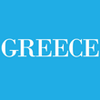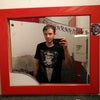The Heraklion Archaeological Museum is one the great museums of Greece and the best in the world regarding the Minoan art as it contains the most notable and complete collection of artifacts of the Minoan civilization of Crete. The museum began in 1883 as a simple collection of antiquities. A dedicated building was constructed from 1904 to 1912 at the instigation of two Cretan archaeologists, Iosif Hatzidakis and Stefanos Xanthoudidis. From 1937, work began on the present earthquake-proof building, designed by the renowned Greek architect Patroklos Karantinos. The museum was damaged during World War II, but the collection survived intact and was again accessible to the public from 1952. A new wing was added in 1964.
Besides the Minoan collection, other periods of Cretan history are covered, from the Neolithic to the Greco-Roman period. The Archaeological Museum at Heraklion is dedicated to Minoan art and artefacts, with a smaller section for post-Minoan art and artefacts. (The Museum is currently being renovated but a temporary exhibition is open in the main building.)
Covers findings from 6000 BCE to the pre-Palatial period, including:
Covers findings from 2000 BCE to 1700 BCE in Knossos, Malia and several peak sanctuaries, including:
Covers findings from 1700 BCE to 1450 BCE, including:
Covers findings from 1450 BCE to 1400 BCE, including:
Covers findings from cemeteries at Knossos, Phaistos and Archanes, including:
Covers findings from 1700 BCE to 1300 BCE from smaller villas and sacred caves, including:
Covers findings from 1700 BCE to 1450 BCE from the palace of Zakros, including:
Covers findings from 1700 BCE to 1450 BCE in eastern Crete, including:
Covers findings from 1400 BCE to 1100 BCE, including:
Covers findings from 1100 BCE to 900 BCE during the arrival of the Dorian Greeks, including:
Covers findings up to 650 BCE, including:
Minoan larnakes (clay coffins) are on display here.
Hours: April-September Monday 12-7pm Tuesday-Sunday 8am-7pm October-March daily 8am-5pm
Admittance: €6, free on Sundays November-May. The Museum is currently CLOSED to the public as the building is being completely renovated but an exhibition of highlights from the collection is now open in a building behind the Museum.
This museum has been closed for renovations since late 2006. A temporary exhibition is now open within the museum where all the main artifacts (including the Phaistos Disk, Snake Goddess, Bull-Leaping and King of the Lillies Frescoes) are displayed. The temporary exhibition includes approximately 450 items in chronological order with the explanatory plaques and context plaques.






